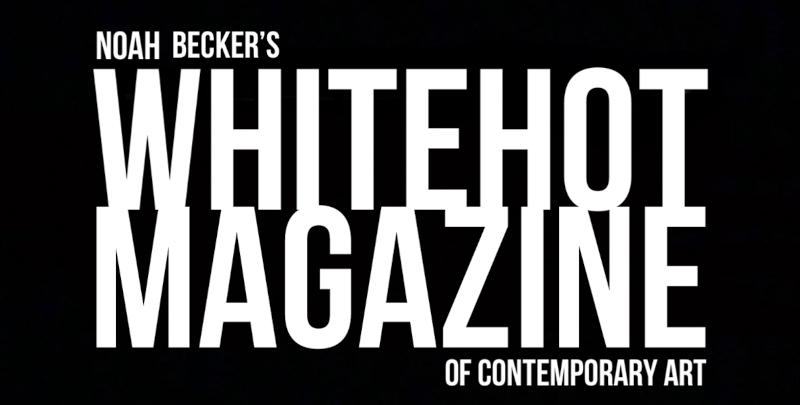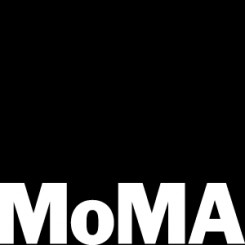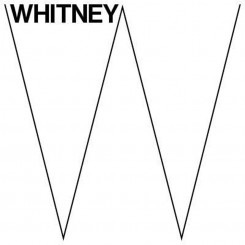Robert Kobayashi at Susan Inglett Gallery
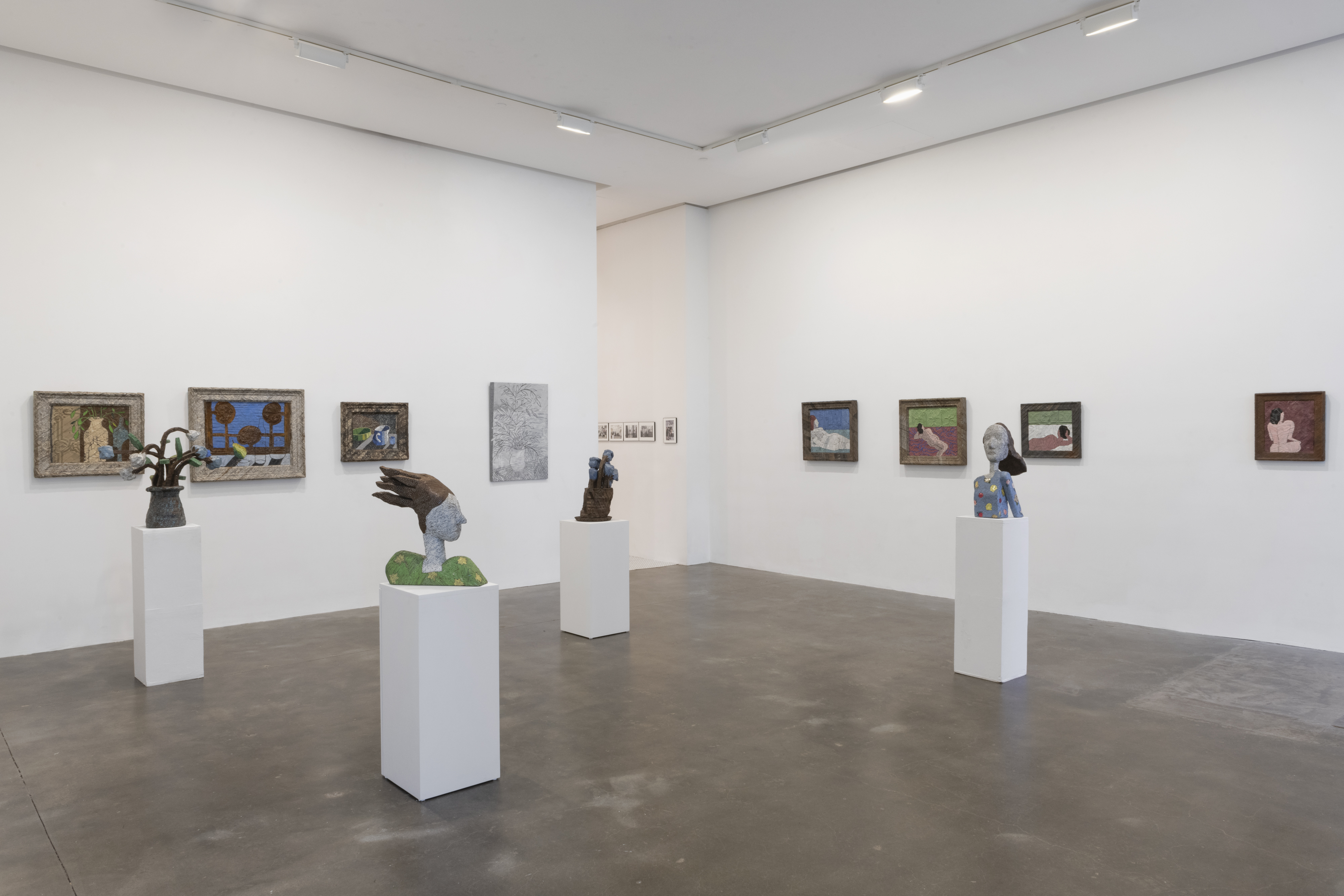 Robert Kobayashi: Moe’s Meat Market, Installation View, 2020. Photo: Adam Reich. Courtesy of Susan Inglett Gallery, NYC.
Robert Kobayashi: Moe’s Meat Market, Installation View, 2020. Photo: Adam Reich. Courtesy of Susan Inglett Gallery, NYC.
Robert Kobayashi: Moe's Meat Market
Susan Inglett Gallery
September 17 - November 7, 2020
By JAN GARDEN CASTRO, October 2020
Robert Kobayashi’s quiet life devoted to art and family creates a welcoming space at the Susan Inglett Gallery in Chelsea. One room with a black and white floor imitates the front room at Moe’s Meat Market, 237 Elizabeth Street, where Kobi made art and lived with his family. The room features an old desk with a white sculpture cat, its tail against the table, and Summer Window, an art work that ushers in green and yellow summer light. Vintage photos of Kobi with wife Kate, daughter Misa, and neighborhood friends recreate scenes from the late seventies.
The cat, Shido Chan, created in 1973 from a white tin, cut into strips, and nailed – with tiny nails -- onto a wooden base, demonstrates clouage, (from the French verb clouage (to nail), a term coined by art historian Michael Florescu. Kobi’s clouage
sculptures include expressive women, flower bouquets, still lifes and
odalisques; his timeless modernist script imbues each portrait with
intimacy and independence. Fumiko in the Wind, 2009, for example,
shows the bust of a dark-haired woman, hair blown back, nose in the
air, and shoulders erect. Her blue dress has bright white and yellow
flowers. Her strong persona blooms. Bobby Chung’s Sister Sin Moi,
2009 is a bust of a woman in a chartreuse top with yellow flowers. Her
hair floats back in three unconventional peaks – like a crown of hair --
as she looks toward someone or something.
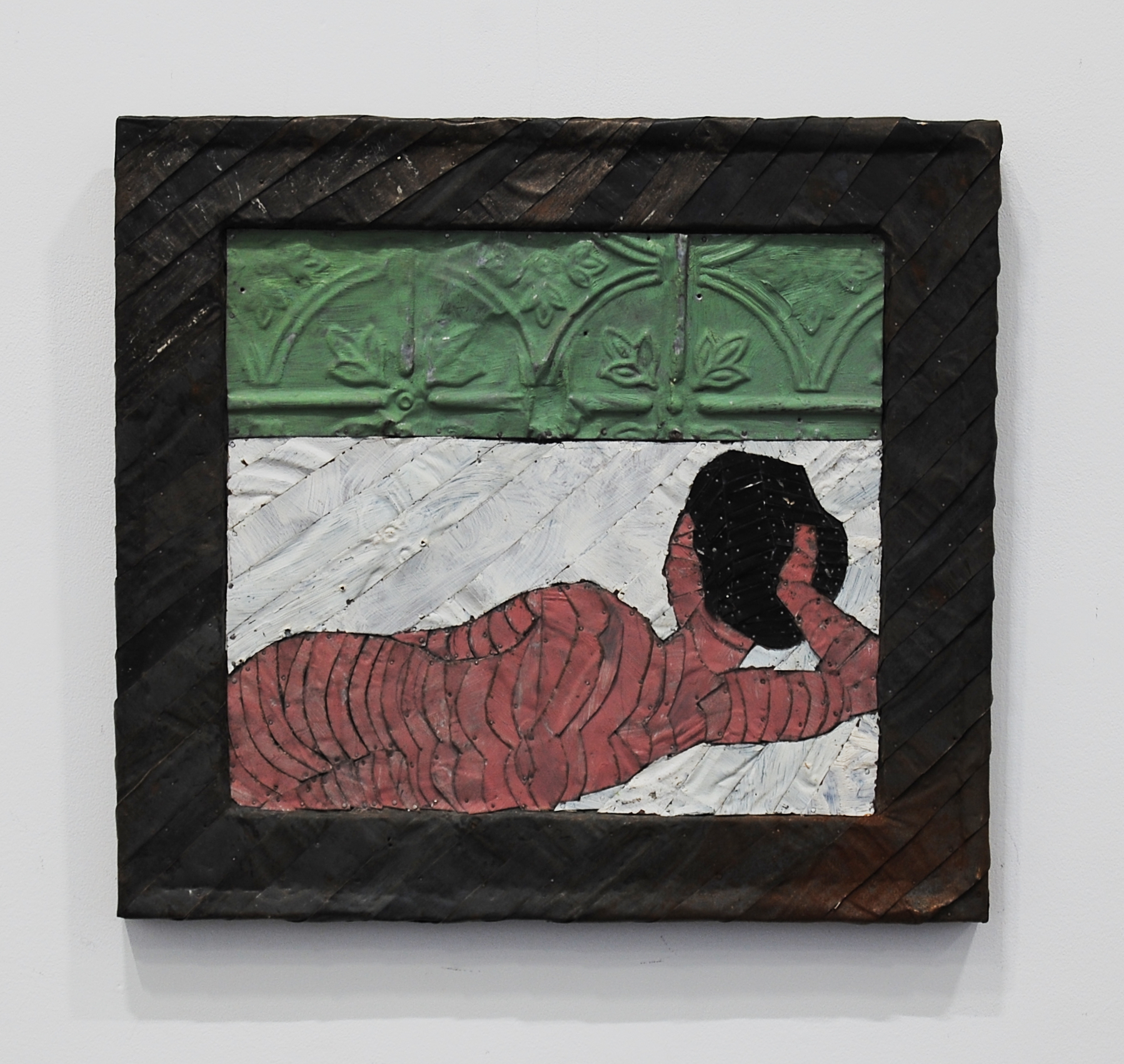 Robert Kobayashi, White Sheet
Robert Kobayashi, White Sheet
Kobayashi’s seated and reclining nudes all have their backs to the viewer. Unlike Manet’s Olympia, who stares straight into a viewer’s eyes or Matisse’s decorative cut-outs without personalities, these nudes reveal only their backs – neither risqué nor sexually confrontational. Black Nude has an inquisitive look as her grey-white-mauve body relaxes against a blue and turquoise ground. White Sheet reveals a dark pink body in the foreground on a white sheet and facing a patterned tin wall. Each woman is a relaxed, natural individual.
In another twist, Yellow Room, 2011 shows a woman in a room with yellow wallpaper decorated with vertical rows of blue flowers with green stems. The woman in the portrait has alert eyes and a cameo around her neck. The composition offers a vertical bouquet around the woman in the center.
The still lifes Tablescape #2 and Eastern Standard Time, Vermont demonstrate two of Kobayashi’s virtuoso uses of point of view. Tablescape #2 has
a silver ceiling tin frame that seems to recede inward toward the
bottle and fruit, each with a long horizontal shadow. With
the frame leading the eye in and with a diagonal that suggests a wall,
the vertical bottle and fruit, and the horizontal shadow, this
composition dazzles with its complexity and use of perspective as the
two objects seem to move out of the frame toward the viewer. Eastern Standard Time, Vermont uses
a flattened Japanese-style foreground and background. I
don’t know exactly what the rounded objects are, but part of the message
seems to be the closeness of the sky in the background to the round
object in the room.
 Robert Kobayashi, Fumiko in the Wind
Robert Kobayashi, Fumiko in the Wind
Two 1986 abstract works, Ionic Order #3 and #6,
use geometric compositions to comment on parallels between early Greek
architecture and early New York City architecture. #3 has two color
areas designed in vertical grids and two designed in diagonal grids. All
four design areas are interrupted by Doric, Ionic, and Corinthian
capitals – but none are at the tops of a shaft or column as they would
be in a Greek column. Kobayashi uses his metal and nail composition
technique in #6 to “lean” a column and its shadow against a white and
blue space. These two compositions show both the artist’s design and
architecture sense and his sense of humor—for the signature markers are
never at the top of a column, and no column has entasis or conforms to
its classical shape. The title emphasizes that the artist prefers the
more delicate Ionic Order over the more masculine Doric order and the
more elaborate Corinthian order --as he wryly follows his own sense of
compositional order and space.
 Robert Kobayashi, Big Deal, 1980.
Robert Kobayashi, Big Deal, 1980.
Two more things greet visitors to the Susan Inglett Gallery: a maquette of the Moe’s Meat Market building, complete with the family dog, a four-story fire escape, and awning, and Big Deal, 1980, art showing a corner of a window in a pool hall. You know you’re entering the past or some bygone or hidden part of New York, but you’re happy to step into this former time. Kate and Misa Kobayashi have created 7 ½ pages of written memories of the neighborhood, starting with the Sicilian butcher shop, Moe’s Meat Market, which is still across the street from 237 Elizabeth. The history of the building and the neighborhood is the story of diversity and perseverance in New York.
Robert Kobayashi lived most of his 90 years in New York City, but he was born in Honolulu in 1925 and died there in 2015. He had 25 solo exhibitions, was in many group exhibitions, and his work is in the collections of the Museum of Modern Art -- where he worked from 1954 - 1978, the Brooklyn Museum, and many private collections. I was introduced to Kate, Kobi, and Misa in the 1990s, as I visited New York from St. Louis. I became a friend before moving to New York in 2005 to continue my art history/ curatorial career. Kobi’s family and art were his whole life. Kobi’s art is an ongoing conversation with viewers and art history. The white cat shines in the light of the Summer Window, the girl in the Yellow Room doesn’t quite realize that sheis the main flower surrounded by flowers. You, the reader, need to actually see Green Wallpaper, 1998, for the delicate curves of the reclining nude’s back, for its green fleur-de-lis ceiling tin wall, and for the red foreground with blue metal lines that form tendrils and swirls more pliant and numinous than Matisse’s exquisite backgrounds. Kobi learned from the masters and talked back to them – and to us -- through his art. WM
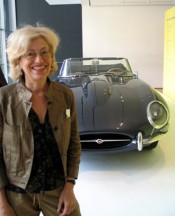
Jan Garden Castro
Jan Garden Castro (www.jancastro.com) is author/editor of six books, including The Art & Life of Georgia O’Keeffe, Contributing Editor for Sculpture Magazine, and contributor for American Book Review.
view all articles from this author